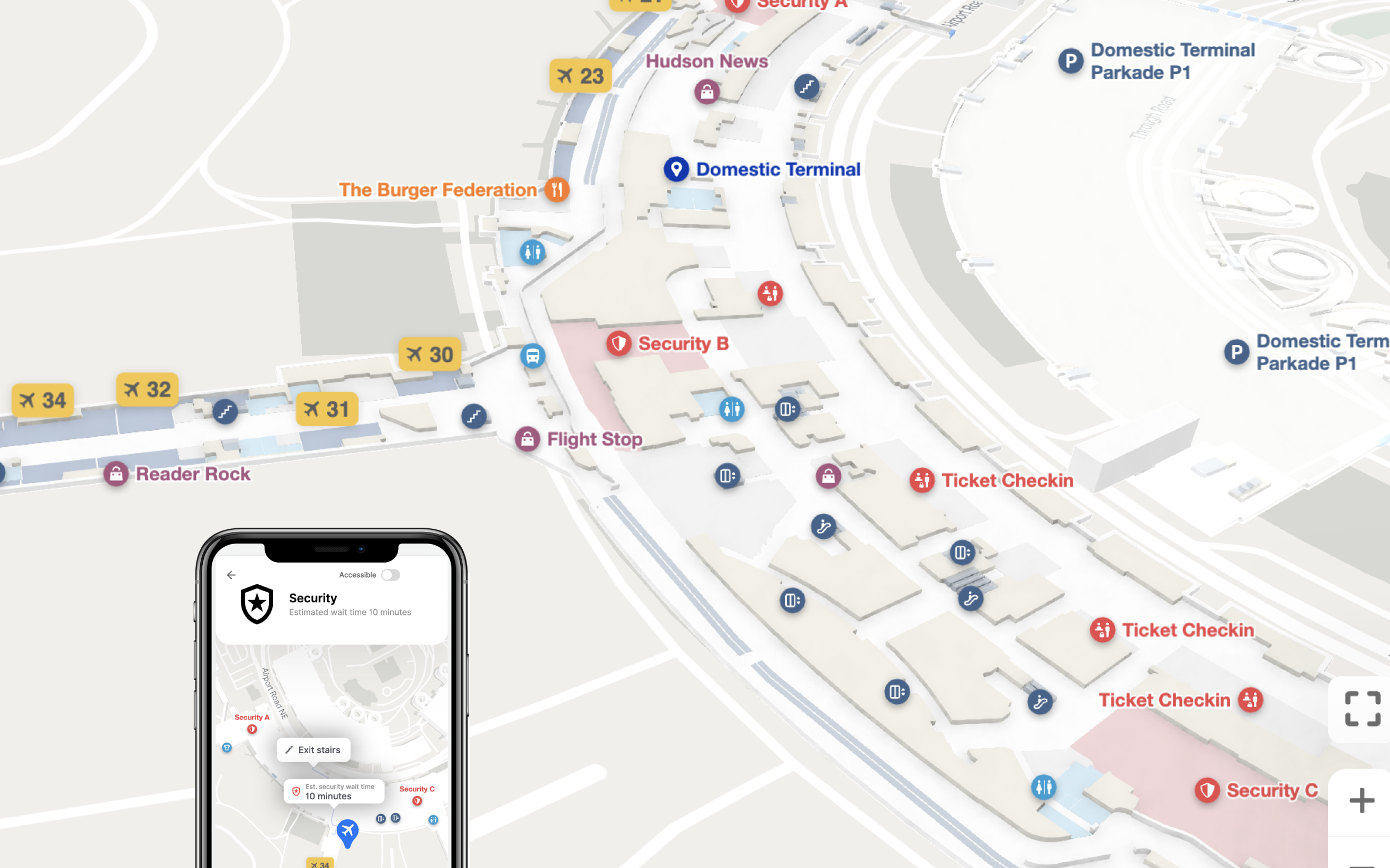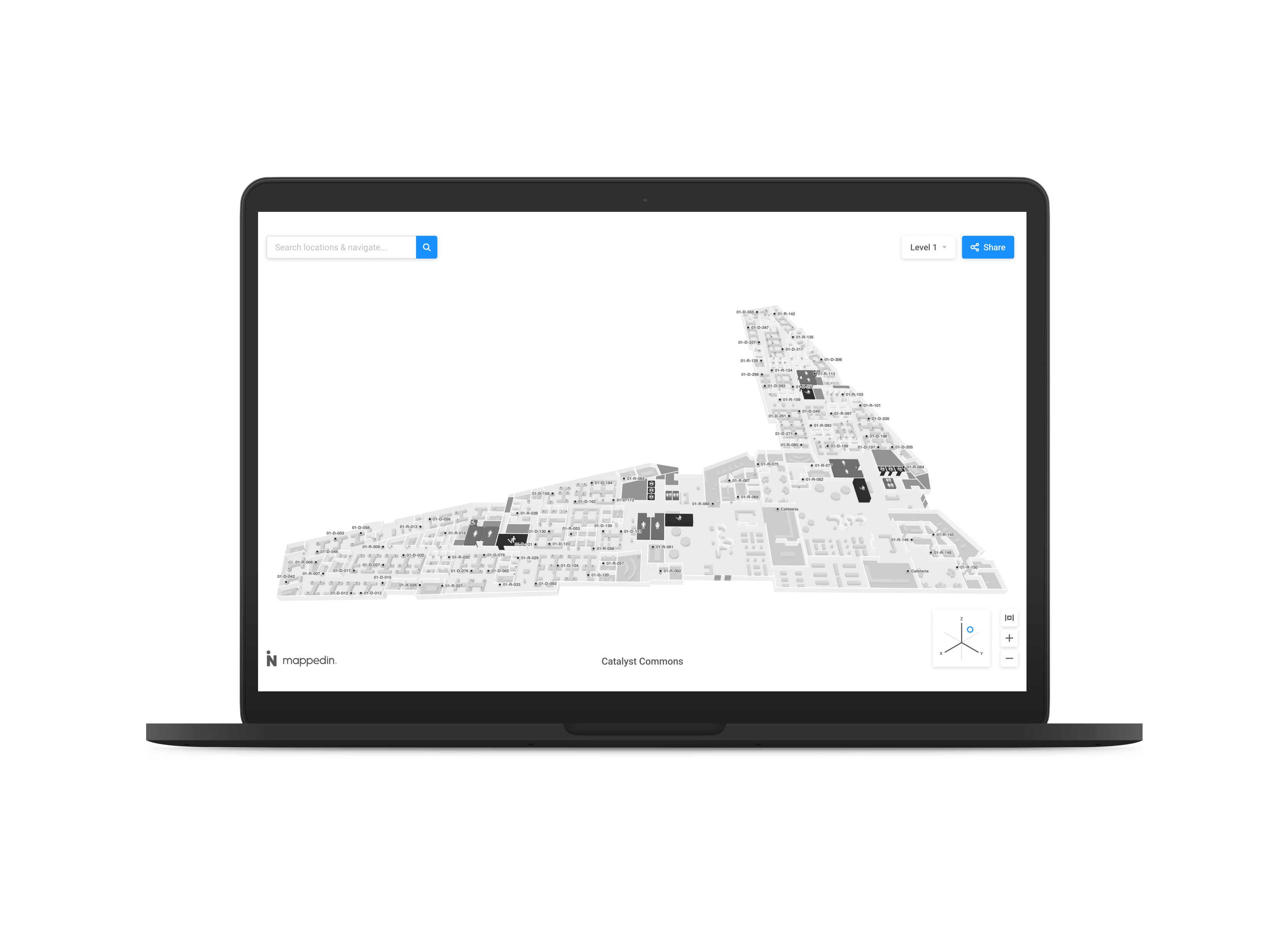Return to Resources
Understanding Airport Revenue Streams - How to Generate More Non-aeronautical Revenue
Dec 4, 2023
6 min read
Unlocking new sources of revenue is a top priority for airports worldwide. Keep reading as we dive into the most effective ways for airports to boost their non-aeronautical revenue.

Airport Revenue Types
First, let's explore the two primary types of airport revenue—aeronautical and non-aeronautical—to set the stage for an in-depth look into innovative strategies to increase airport revenue.
Aeronautical Revenue
Aeronautical revenue includes income generated from activities directly linked to air traffic, such as flights. This category encompasses landing fees, aircraft parking charges, and passenger security fees. While essential, aeronautical revenue is often influenced by factors beyond an airport's control, such as airline routes and the broader aviation industry's performance. These fees are a significant part of an airport's revenue share, but airports need to explore additional income streams.
Non-aeronautical Revenue
Non-aeronautical revenue, on the other hand, comprises income from a wide range of airport-related services and facilities. This diverse category encompasses areas such as retail shopping, food and beverage, advertising, car rentals, parking, and real estate leasing. Non-aeronautical revenue offers airports the opportunity to diversify their income streams and reduce dependency on fluctuating aeronautical revenues. It is a key part of a well-rounded revenue strategy for airports.
What Are Non-aeronautical Activities?
Non-aeronautical activities cover a broad spectrum of services and offerings within an airport. These activities include:
Retail: Airport shops, duty-free outlets, and specialty stores.
Food and Drink: Restaurants, cafes, and bars.
Advertising: Marketing spaces, digital ads, and sponsorships.
Car Rentals: Vehicle rental services for travelers.
Parking: Airport parking services for passengers and visitors.
Real Estate Leasing: Renting airport property to businesses and organizations.
Non-aeronautical activities contribute to enhancing the passenger experience, increasing traveler engagement, and adding a new dimension to airport profitability.
Why is Non-aeronautical Revenue Important for Airports?
Non-aeronautical revenue is crucial for airports for several reasons:
Diversification: Relying solely on aeronautical revenue can lead to financial instability. Non-aeronautical revenue diversifies income sources, reducing dependency on a single revenue stream. This diversification is one of the most effective ways for airports to ensure financial growth.
Revenue Potential: The non-aeronautical sector offers significant revenue potential. By optimizing services, airports can tap into untapped revenue streams.
Enhanced Passenger Experience: Non-aeronautical activities, such as retail and dining options, contribute to an improved passenger experience, increasing customer satisfaction and loyalty. Happy customers are more likely to spend their money on airport services.
Competitive Edge: Airports that offer a wide range of non-aeronautical services gain a competitive advantage by attracting more passengers and businesses.
Economic Impact: Increasing non-aeronautical revenue positively impacts the local economy by creating jobs and attracting businesses to the airport vicinity.
Strategies to Increase Non-aeronautical Revenue at Airports
Utilize Digital Indoor Maps

Passenger Engagement
Digital indoor maps offer an array of functionalities that significantly elevate the passenger experience. These interactive maps provide real-time information on gate locations, check-in counters, security checkpoint wait times, and baggage claim areas. Travelers can conveniently access information on their smartphones, helping them navigate the airport efficiently and explore a wide array of offerings, from duty-free shops to dining options.
Proximity Marketing and Advertising
Airports are dynamic environments with a constant flow of passengers, providing excellent opportunities for advertising and marketing. Digital directory screens serve a dual purpose, acting as a versatile platform for providing maps with directions and displaying targeted advertisements. This approach effectively connects businesses with an engaged audience in high-traffic airport locations and provides an additional revenue stream for airport operators.
Analytics for Improved Decision-Making
Indoor mapping platforms collect valuable data on passenger movements, preferences, and behaviours that help airports enhance their non-aeronautical revenue. This information empowers airports to optimize advertising efforts by understanding passenger trends, personalizing marketing campaigns, and continuously improving the passenger experience. By harnessing the power of data and analytics, airports can make informed decisions that ultimately lead to higher non-aeronautical revenue and a more satisfying journey for travelers.
Other Revenue-Boosting Benefits
Digital indoor maps can also be integrated with other services to offer a spectrum of revenue-boosting benefits that extend beyond passenger engagement and advertising. For example, they can facilitate innovative services such as airport parking reservation software, allowing passengers to conveniently book parking spaces in advance. Moreover, passengers can use the maps to pre-book their preferred food and beverage services, ensuring they have access to their desired meals, thereby enhancing their airport experience while contributing to increased non-aeronautical revenue.
Airport Parking Reservation Software
Efficient airport parking reservation systems allow travelers to book and pay for parking spaces in advance, ensuring a convenient and stress-free experience. By pre-booking, passengers gain peace of mind, knowing they have a secure spot waiting for them upon arrival.
Pre-book Food and Beverage
Pre-booking food and beverage services revolutionizes the airport dining experience. It lets travelers secure their dining options before their flight, reducing wait times and ensuring a swift and pleasant dining experience.
Airport Lounge Reservations
Airport lounges offer comfort and relaxation. Allowing passengers to reserve lounge access in advance can be a valuable revenue source for airports.
Loyalty and Reward Schemes
Implementing loyalty programs and reward schemes incentivizes travelers to explore and spend more on non-aeronautical services, increasing revenue. These programs offer benefits to frequent travelers, fostering passenger loyalty and higher revenue flows.

Frequently Asked Questions
What Makes an Airport Successful?
A successful airport adeptly balances its revenue streams, encompassing aeronautical activities such as landing fees and aircraft services alongside non-aeronautical sources such as retail, dining, and advertising. This equilibrium guarantees financial resilience and sustainability. Yet, it's not solely about financial success; thriving airports prioritize passenger experiences, aiming to make each journey as smooth and enjoyable as possible by offering top-notch services and amenities.
How Do Airports Improve the Economy?
Airports play a pivotal role in regional economic development by creating job opportunities, attracting businesses, and boosting tourism in the surrounding areas. Their substantial impact extends far beyond the terminal gates, fostering prosperity in the local and regional community.
Why Are Airports Profitable?
Airports achieve profitability through a multifaceted approach. They optimize various revenue sources, including parking, retail, dining, and advertising, ensuring a consistent flow of income. Cost management is equally vital; by efficiently handling operating costs, airports can enhance their profitability. Additionally, strategic investments in infrastructure and services are integral, attracting airlines, passengers, and businesses, further contributing to increased revenue.
Ready to explore cutting-edge solutions to boost your airport's non-aeronautical revenue? Discover how Mappedin Airports can help you tap into untapped revenue streams and enhance the passenger experience.


